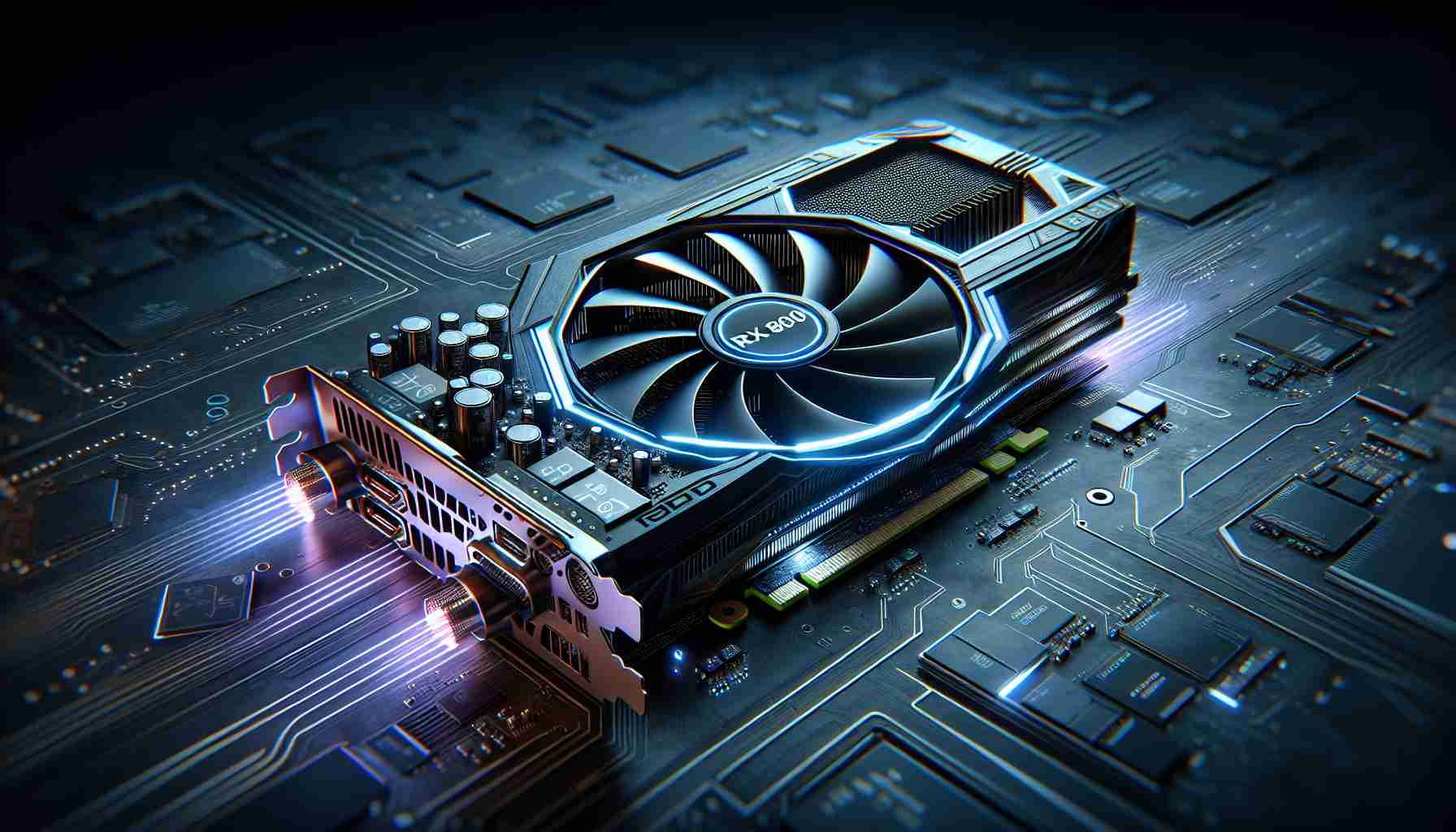- The RX 8800 is anticipated to be a groundbreaking advancement in graphics processing units, generating significant buzz in the tech community.
- Rumored features include a cutting-edge 7nm process node, offering superior speed and energy efficiency.
- The architectural enhancements are expected to improve core optimization, increasing bandwidth and doubling data throughput.
- Real-time ray tracing is a standout feature, aiming to vastly improve lighting, shadows, and reflections in real-time applications.
- The RX 8800 could significantly impact virtual reality and AI applications, becoming a pivotal element in future digital innovation.
- Amid fierce competition, the release of the RX 8800 is highly anticipated, with no official release date announced yet.
The tech community is buzzing with speculation following a series of leaks and hints about a potential blockbuster in the world of graphics processing units: the RX 8800. As expectations soar, enthusiasts and industry insiders alike are eager to see how this purported game-changer might redefine gaming and professional graphics.
The RX 8800 is rumored to build upon its predecessors with cutting-edge technology, promising unparalleled performance and efficiency. If the whispers are true, the RX 8800 will incorporate an advanced 7nm process node, enhancing speed while reducing energy consumption. This evolution in architectural design optimizes the chip’s cores, offering higher bandwidth and potentially doubling data throughput.
A standout feature expected in the RX 8800 is its purported implementation of real-time ray tracing. Such an improvement could bring life-like lighting, shadows, and reflections to real-time applications, promising to redefine visual realism in gaming and digital creation. It’s a coveted aspect among gamers seeking a more immersive experience and designers who require robust rendering capabilities.
With competition heating up between major graphics card manufacturers, the introduction of the RX 8800 could spark a new race for supremacy. The potential impact on virtual reality and artificial intelligence applications is also immense, making the RX 8800 not just a GPU but a cornerstone of future digital landscapes.
While there is no official release date yet, the excitement builds as the tech world anticipates what could be a pivotal moment in graphics technology. Stay tuned as more details emerge, and prepare for what could be the most significant leap in graphics processing in recent memory.
Can the RX 8800 Redefine the Graphics Card Market?
Latest Details on the RX 8800 Graphics Card
The anticipation surrounding the RX 8800 graphics card continues to mount as enthusiasts and industry insiders eagerly await its potential release. Here’s what we know so far, accompanied by an analysis of major aspects surrounding the RX 8800:
# How Does the RX 8800 Compare to Existing Graphics Cards?
1. Performance Expectations: The RX 8800 is speculated to offer mind-blowing performance with the new 7nm process node, which could result in a significant boost in speed and efficiency compared to its predecessors. Its enhanced core architecture is expected to provide higher bandwidth, potentially doubling data throughput, a significant leap that could challenge existing market leaders.
2. Graphics Features: The card is expected to feature advanced real-time ray tracing capabilities. This offers lifelike lighting and shadow effects, a feature that could significantly improve the immersive experience in gaming and elevate digital content creation for designers needing robust rendering.
3. Use Cases and Compatibility: With its cutting-edge features, the RX 8800 will likely cater to a wide range of use cases including high-performance gaming, virtual reality, and artificial intelligence applications. It’s designed for compatibility with current PCIe 4.0 systems and might introduce backward compatibility solutions to appeal to a broader audience.
# What Are the Pros and Cons of the RX 8800?
1. Pros:
– Performance: Unmatched processing power and efficiency improvements.
– Real-Time Ray Tracing: Enhanced visual realism for both gaming and professional graphics.
– AI and VR Opportunities: Paves the way for advanced applications, tapping into next-gen virtual experiences and artificial intelligence advancements.
2. Cons:
– Potential High Cost: The advanced technology may come at a premium, making it less accessible to budget-conscious consumers.
– Power Requirements: New advancements might lead to higher power consumption, requiring upgraded power supplies or cooling systems.
# What Impact Could the RX 8800 Have on the Market?
1. Market Forecast: The RX 8800 is positioned to be a game-changer, potentially influencing pricing and innovation strategies of competing graphics card manufacturers. Its introduction could initiate a new phase of technological competition and innovation in the graphics sector.
2. Predictions and Insights: If the RX 8800 lives up to its hype, it may shift consumer preferences towards more future-ready technologies, setting new benchmarks for performance and functionality in graphics processing units.
For more on graphics cards and industry innovations, check out NVIDIA and AMD. Stay informed as we delve into the exciting potential of the RX 8800 and its impact on the tech landscape.
